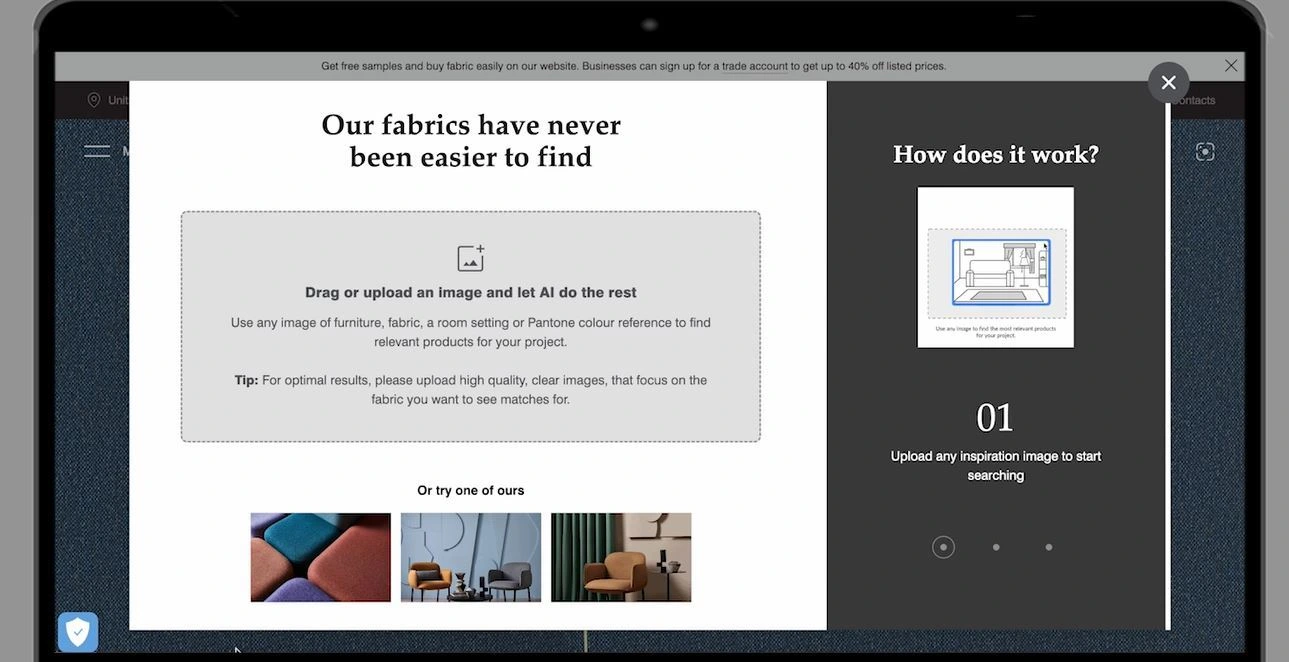Leading International designer and manufacturer of commercial textiles, Camira, has launched the sector’s first AI-powered image search tool in the UK to streamline the specification process for architects and design professionals.
In partnership with material search platform, Stylib, Camira has integrated the new technology into its existing website which launched earlier this year. Powered by artificial intelligence, the dynamic search tool allows users to upload images of furniture, fabric, room settings or pantone colour references, to find relevant Camira fabrics for their projects.
Commenting on the AI search tool, head of digital at Camira, Sam Birkhead said: “We’re incredibly excited to be able to offer our customers this new and intuitive tool which enables architects and designers to quickly find precise products that meet their specifications, reducing the time spent on research and increasing the accuracy of their selections.
“There are very few B2B companies in the world that operate image search – a technology that until today has been reserved for giants like Ikea, Wayfair and fashion retailers. These advancements lead to faster and more confident specification processes, allowing for more efficient project timelines and improved overall design quality. Ultimately, AI’s integration is transforming the architectural landscape, paving the way for smarter, more sustainable, and innovative built environments.”
Noam Naveh, CEO at Stylib added: “It’s great to see industry leaders like Camira adopting advanced solutions that support the specifying community’s work. Beyond the immediate benefits of faster and more confident specification processes, AI in the architectural products industry has broader implications for sustainability, innovation, and collaboration.
AI’s ability to analyze vast datasets allows for the identification of eco-friendly materials and energy-efficient solutions, promoting sustainable design practices. Additionally, AI fosters innovation by providing architects with insights into emerging trends and new technologies, enabling them to push creative boundaries.”


























